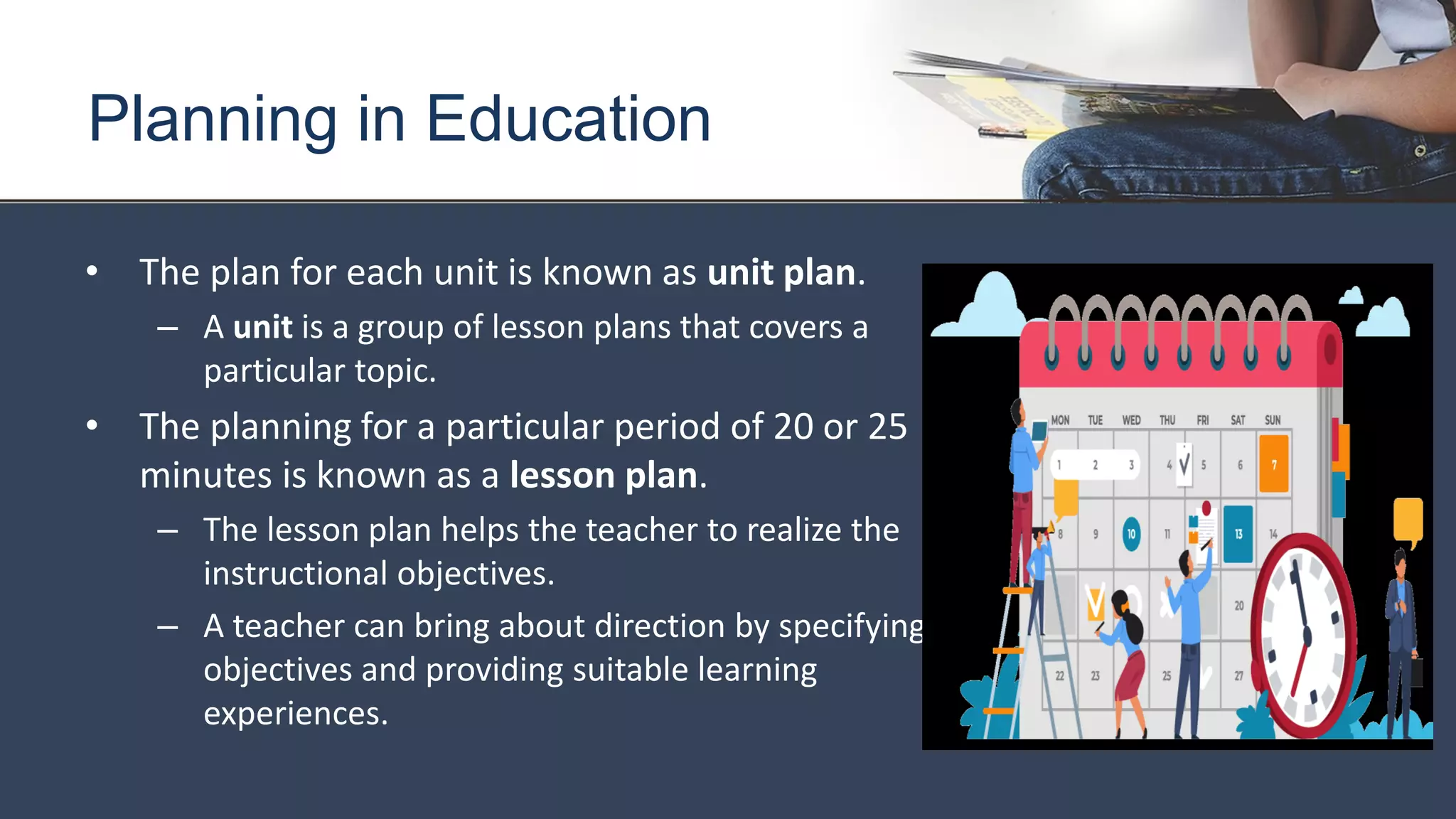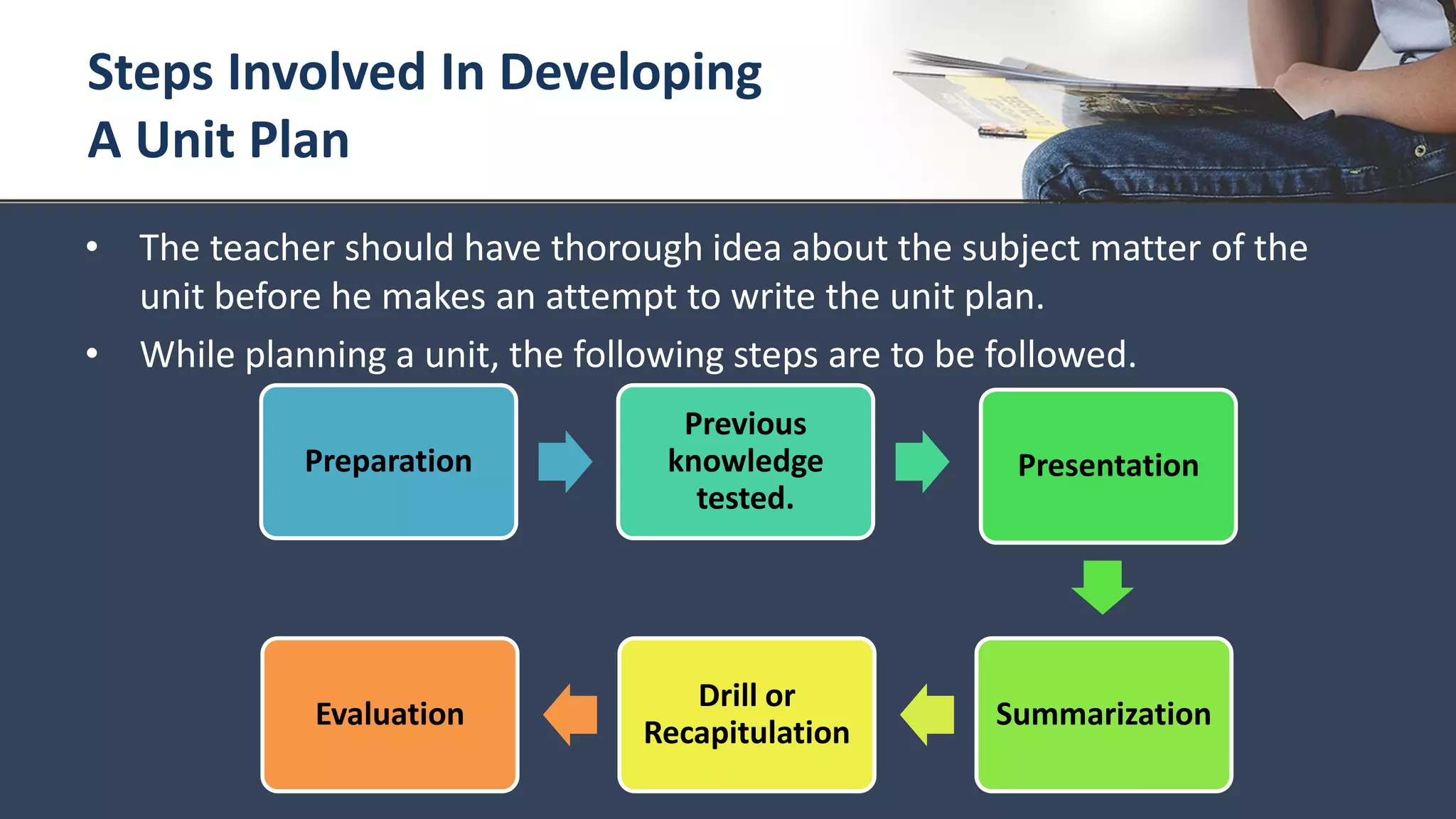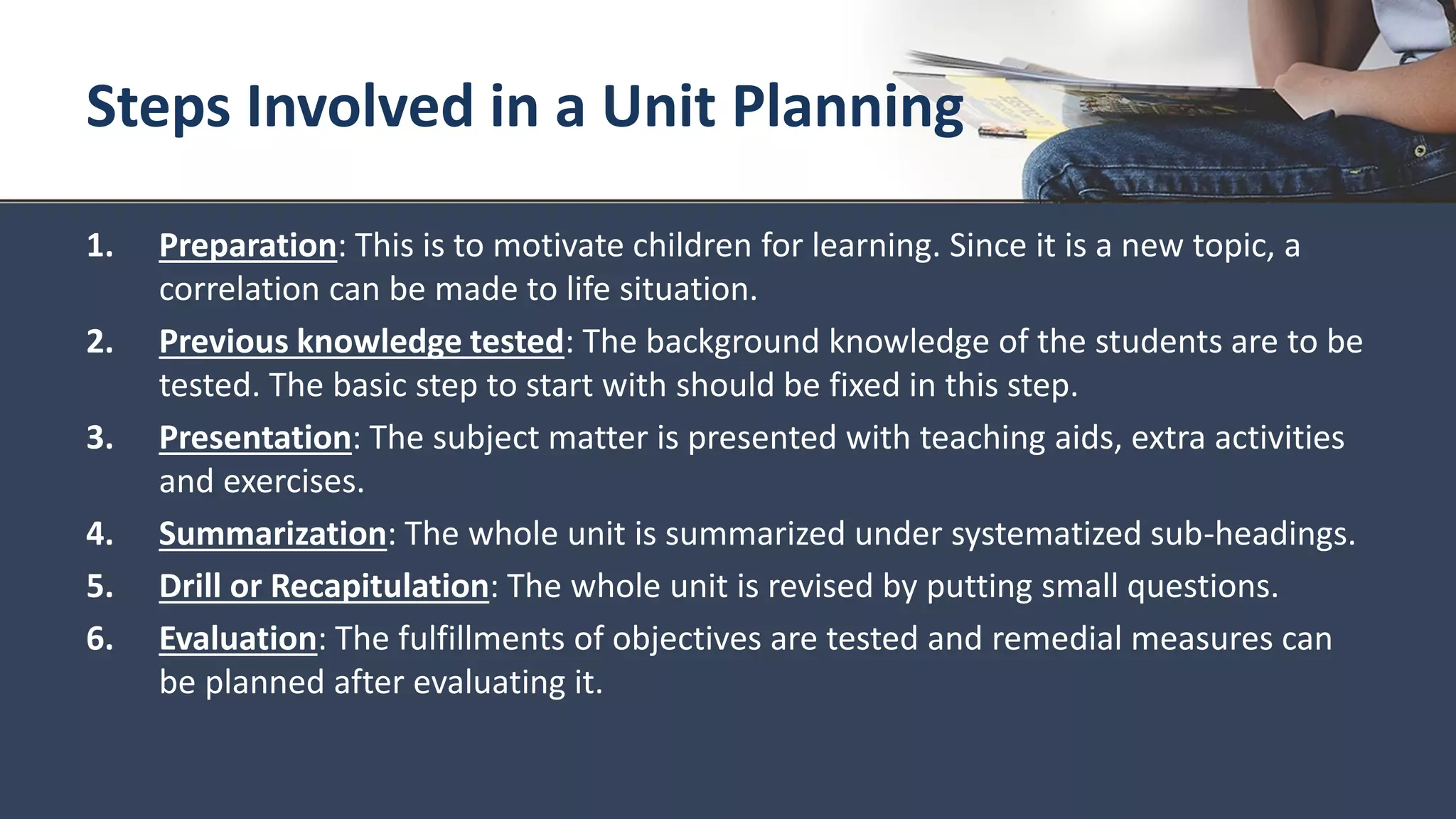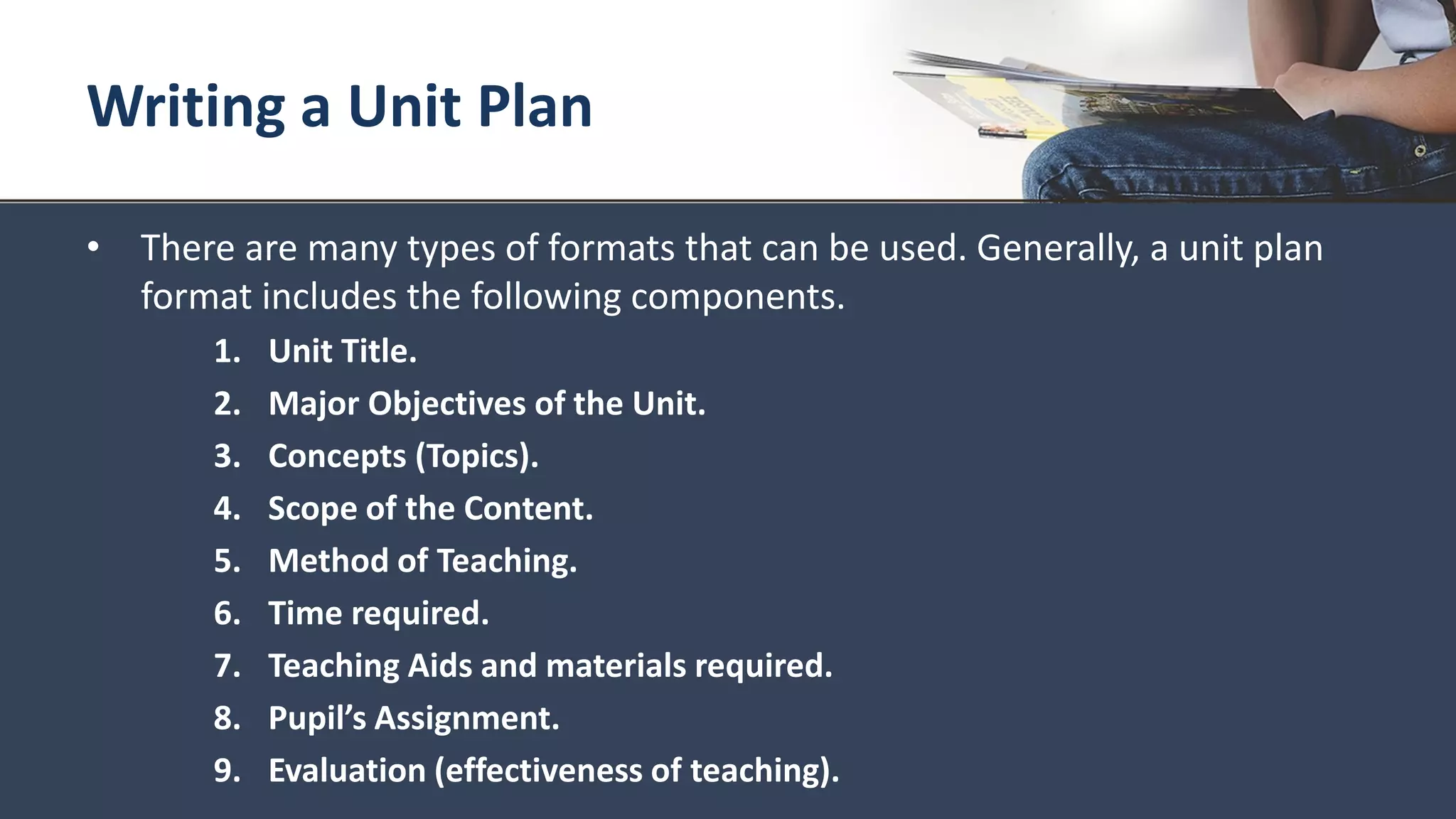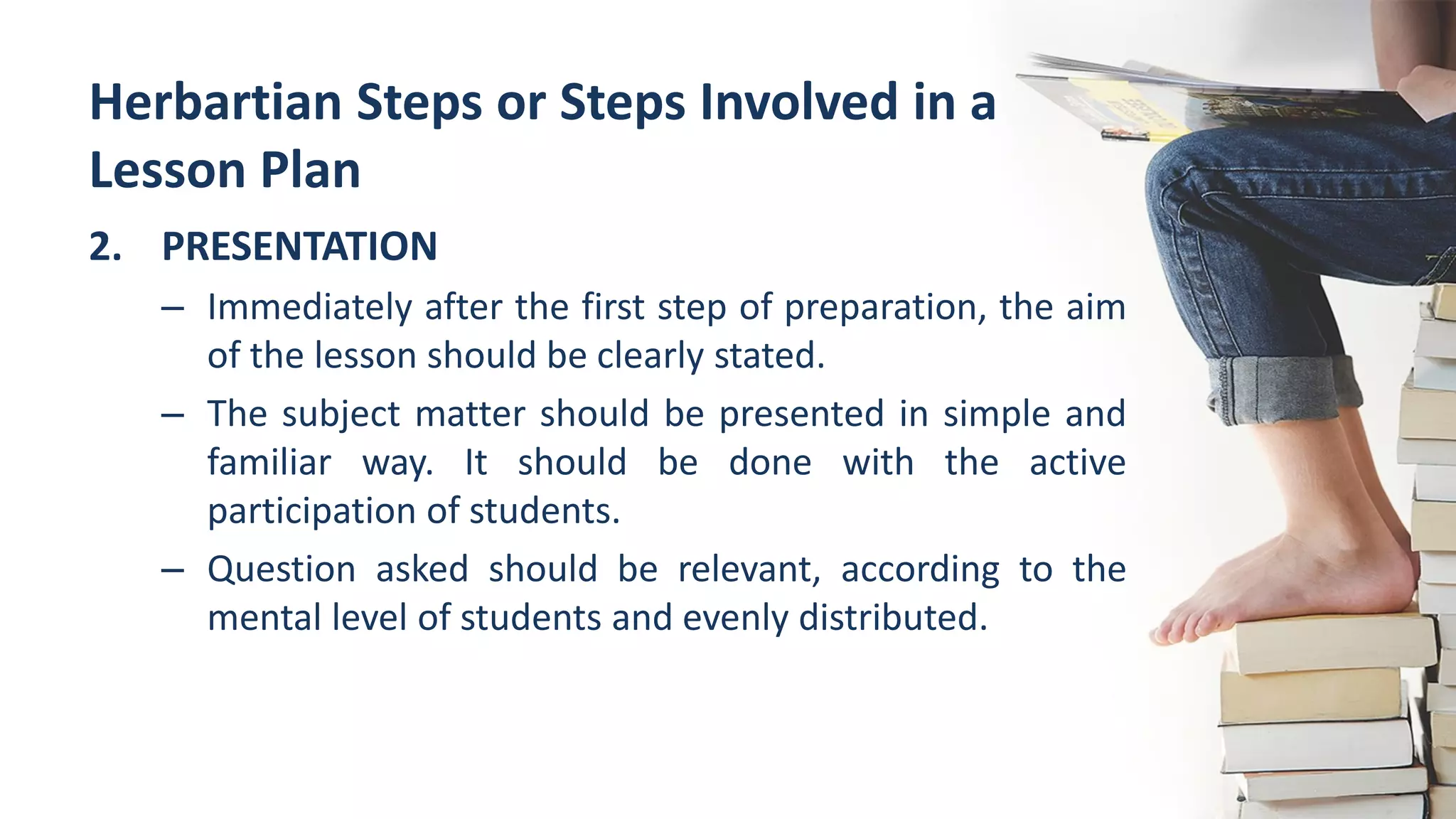This document discusses unit planning and lesson planning in education. It provides examples of general instructional objectives that are broad and non-behavioral, as well as specific instructional objectives that are measurable and behavioral. Specific objectives should include the expected action, conditions, and criteria. Lesson plans are for single periods while unit plans cover a topic over multiple lessons. Unit plans help ensure direction and systematic work. They also aid in organizing content and selecting methods. Objectives and planning are important for effective teaching and learning.





